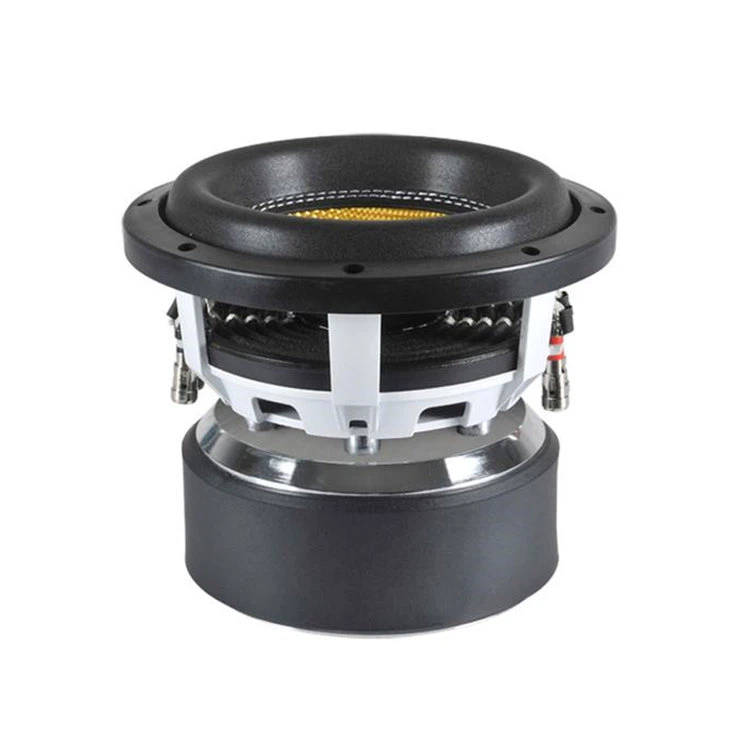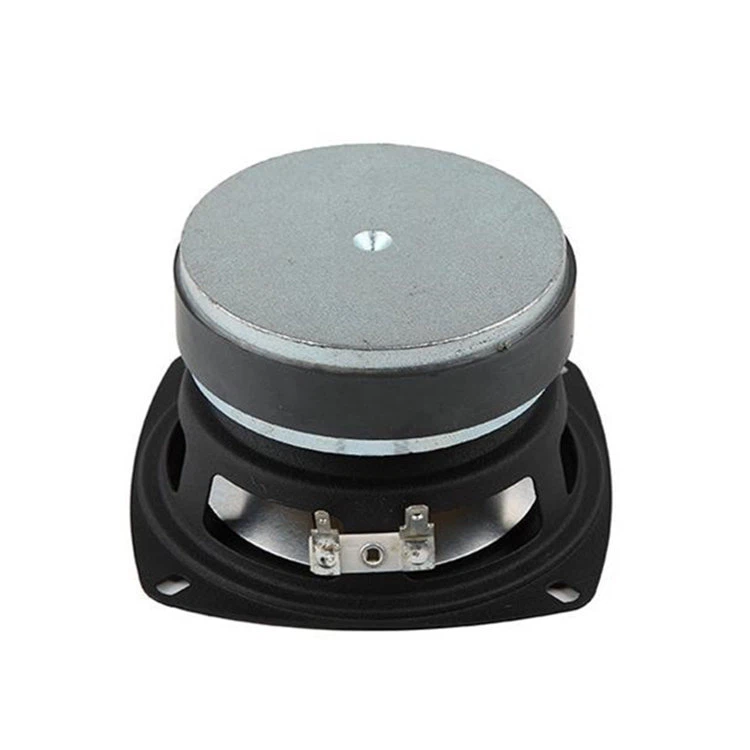Can the enclosure design affect the performance of a woofer magnet?
 Jul 22, 2025|
Jul 22, 2025| Hey there! As a supplier of Woofer Magnets, I've been getting a lot of questions lately about how enclosure design can impact the performance of these crucial components. So, I thought I'd take a deep dive into this topic and share my insights with you all.
First off, let's talk about what a woofer magnet does. In a speaker system, the woofer magnet is responsible for creating a magnetic field that interacts with the voice coil. This interaction causes the cone of the woofer to move back and forth, producing sound waves in the low - frequency range. It's a fundamental part of any speaker setup, especially when you're looking for that rich, deep bass.


Now, onto the main question: Can the enclosure design affect the performance of a woofer magnet? The short answer is yes, and here's why.
Air Pressure and Resonance
The enclosure acts as a housing for the woofer, and it significantly affects the air pressure around the speaker cone. Different enclosure designs create different air pressure conditions. For example, a sealed enclosure traps the air inside, which restricts the movement of the cone to some extent. This can lead to a more controlled movement of the cone, which in turn can affect how the woofer magnet interacts with the voice coil.
On the other hand, a ported enclosure has a vent or port that allows air to move in and out. This can create resonance within the enclosure. Resonance can amplify certain frequencies, but if not properly tuned, it can also cause distortion. When the air inside the enclosure resonates, it can put additional stress on the woofer cone, and this stress is transferred to the voice coil and the magnet. If the resonance frequency is close to the natural frequency of the woofer magnet - voice coil system, it can cause the magnet to work harder, potentially leading to overheating and reduced performance over time.
Heat Dissipation
Another important factor is heat dissipation. The woofer magnet generates heat during operation, especially when the speaker is playing at high volumes for extended periods. The enclosure design can either help or hinder the heat dissipation process.
A well - designed enclosure with proper ventilation can allow heat to escape more easily. This is crucial because excessive heat can demagnetize the woofer magnet, reducing its magnetic strength. When the magnetic strength decreases, the interaction between the magnet and the voice coil becomes weaker, resulting in a loss of bass output and overall sound quality.
For instance, some enclosures are designed with heat sinks or channels that direct the hot air away from the magnet. This helps maintain the optimal temperature of the magnet, ensuring consistent performance. On the contrary, a poorly designed enclosure that traps heat can cause the magnet to overheat quickly, leading to premature failure.
Acoustic Loading
Acoustic loading refers to how the enclosure affects the movement of the speaker cone by the surrounding air. The enclosure design determines the acoustic load on the woofer. A heavy acoustic load can make the cone move more slowly, which can change the way the magnet and voice coil interact.
In a large enclosure, the acoustic load is generally lighter, allowing the cone to move more freely. This can result in a more open and natural sound. However, if the enclosure is too large, it can also cause the woofer to lose some of its control, leading to muddled bass.
In a small enclosure, the acoustic load is heavier. The cone has less space to move, and this can increase the pressure on the magnet - voice coil system. The magnet may need to work harder to move the cone against the increased air pressure, which can affect its efficiency and performance.
Types of Enclosures and Their Impact
Let's take a closer look at some common enclosure types and how they impact woofer magnet performance.
Sealed Enclosures
Sealed enclosures are known for their tight and accurate bass. They provide a consistent acoustic load on the woofer, which helps in maintaining a stable interaction between the magnet and the voice coil. Since the air inside is trapped, there is less risk of resonance - related issues. However, as mentioned earlier, the restricted air movement can make the magnet work a bit harder to move the cone.
For audio enthusiasts who prefer a more controlled and punchy bass, sealed enclosures can be a great choice. But it's important to make sure that the enclosure is sized correctly for the woofer to avoid putting too much stress on the magnet.
Ported Enclosures
Ported enclosures are popular for their ability to produce deeper bass. The port allows the enclosure to extend the low - frequency response. However, as we discussed, the resonance in ported enclosures can be a double - edged sword. If the port is not properly tuned, it can cause distortion and put extra stress on the woofer magnet.
When using a ported enclosure, it's essential to choose a woofer magnet that can handle the additional load. For example, our Subwoofer Impulse Triple Magnet is designed to be more robust and can better withstand the challenges posed by ported enclosures.
Bandpass Enclosures
Bandpass enclosures are more complex and are designed to emphasize a specific range of frequencies. They have two chambers, one sealed and one ported. This design can provide very high output in the targeted frequency range. However, it also puts a lot of stress on the woofer magnet and the entire speaker system.
The complex air movement and resonance within a bandpass enclosure require a high - quality woofer magnet. Our Woofer Magnet is engineered to offer excellent performance in various enclosure types, including bandpass enclosures.
Choosing the Right Enclosure for Your Woofer Magnet
When you're choosing an enclosure for your woofer magnet, there are a few things to keep in mind.
First, consider the type of music or audio you'll be playing. If you're into electronic music with a lot of deep bass, a ported or bandpass enclosure might be a good choice. But if you prefer classical music or vocals, a sealed enclosure could be more suitable.
Second, make sure to match the enclosure size to the woofer size. An improperly sized enclosure can cause all sorts of problems, from reduced performance to premature failure of the woofer magnet.
Finally, always choose a high - quality woofer magnet. At our company, we offer a wide range of 10 Inch Speaker Magnet and other sizes, all designed to provide optimal performance in different enclosure designs.
Conclusion
In conclusion, the enclosure design has a significant impact on the performance of a woofer magnet. From air pressure and resonance to heat dissipation and acoustic loading, every aspect of the enclosure design can either enhance or degrade the performance of the woofer magnet.
As a Woofer Magnet supplier, we understand the importance of getting the enclosure design right. That's why we offer high - quality magnets that are designed to work well in various enclosure types. Whether you're a professional audio engineer or a DIY enthusiast, choosing the right combination of woofer magnet and enclosure design is crucial for achieving the best sound quality.
If you're interested in purchasing our Woofer Magnets or have any questions about how our products can work with different enclosure designs, we'd love to hear from you. Feel free to reach out to us to start a discussion about your specific needs and requirements.
References
- Olson, Harry F. "Elements of Acoustical Engineering." Van Nostrand, 1957.
- Beranek, Leo L. "Acoustics." American Institute of Physics, 1986.
- Toole, Floyd E. "Sound Reproduction: The Acoustics and Psychoacoustics of Loudspeakers and Rooms." Elsevier, 2008.

